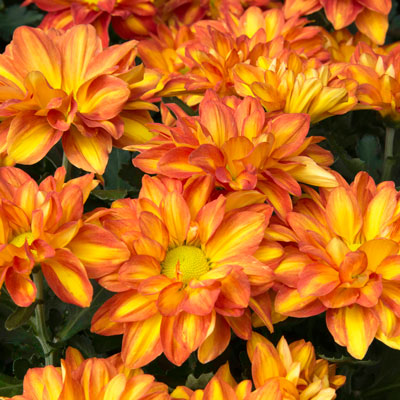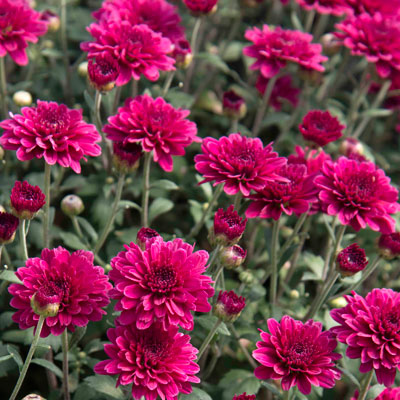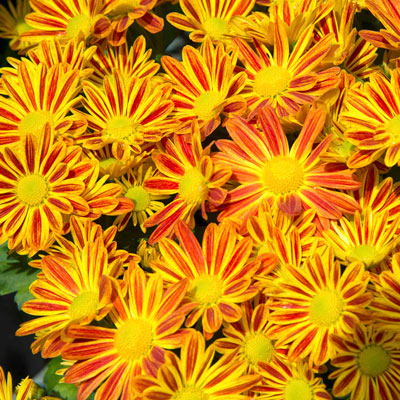Great Year for Mums
You’ve probably noticed that there are scores of sizes, styles and colors of chrysanthemums. Nurseries sell what they refer to as “garden mums,” and the old term was “cushion mums” because they looked like pillows of color. Garden mums typically start to bloom in early to mid-fall.

Florist mums are grown and sold in pots, usually with one flower head per stem. That’s because they have been “disbudded” to remove all the side buds. Most of the potted florist mums are also larger plants that bloom later into the fall.
Cutflower mums such as those used for football corsages are grown in beds. They’re also disbudded and grown with just one flower per plant. That allows all of the water and nutrients to be shuttled directly to the one floral head. You’ll rarely see these grown in gardens.

When your mums finish blooming…
Chrysanthemums stay colorful for three to six weeks. As the heads fade to tan you can trim the plants back near the ground. They are perennials, so they’ll come back from their roots every spring. In fact, if you look closely, you’ll often see the small shoots that will become next spring’s plants starting to the emerge near the ground. Cut the old, spent flower stalks back just above those new shoots.
At some point you’ll want to dig and divide your mums to spread them around in your garden. You can do that in late fall, or you can wait and do so in late winter (February), before new growth shoots out for the spring.

Did you know this about mums?
• What we refer to as “flowers” are actually floral heads made up of scores of small individual flowers. That’s the origin for the family name “Composite.” Like zinnias, marigolds and sunflowers, mums’ heads are made up of multiple flowers.
• Mums measure the length of the night to determine when it’s time to start blooming. That’s referred to as a “photoperiodic” plant. There is a flowering hormone that is destroyed by light. When a chrysanthemum plant is exposed to fairly long nights, enough of that hormone accumulates to trigger the flowering process. All it takes is a few minutes of bright light in the middle of the night to slow it all down. Poinsettias and Christmas cacti are also photoperiodic plants.
• Garden mums may try to bloom again in the spring. Nights, after all, are the same length then that they are right now. You can enjoy those blooms for a period of time, but by late May it’s time to trim them off and stimulate new vegetative growth for the summer and into the fall.
